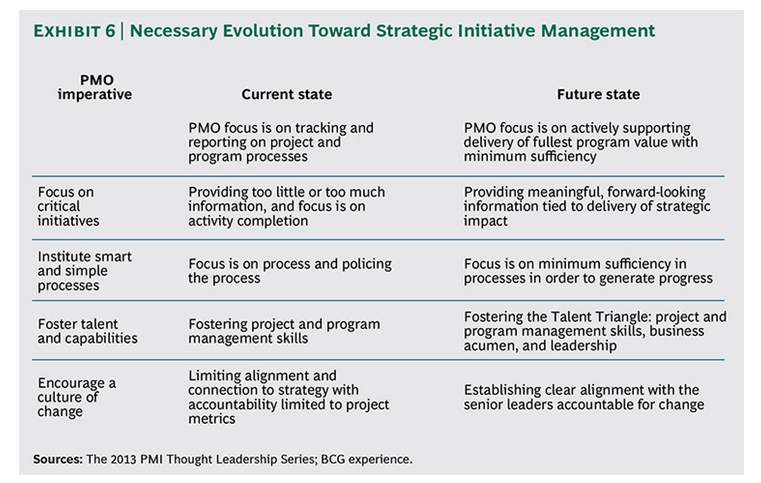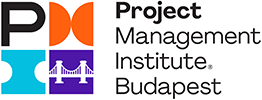October 22 2024 at 05:00AM
The role of PMO in today’s organizations
If you had to define PMO in the context of current organizations in 2024, how would you define it?
What is the function performed by PMO and what responsibilities could sit under PMO in today’s organizations which have become increasingly complex, cross-collaborative and distributed across different geographical regions?
Definition of PMO
Looking through an earlier definition of what PMO stands for, as provided by PMBOK Guide Third edition: “an organizational unit to centralize and coordinate the management of projects under its domain” (PMI, 2004, p.17), we see that PMO organizations are overseeing the management of projects and programs, being known also as project management office, program management office or just project office.
If we look into the definition provided in PMBOK Guide Fifth edition, the PMO is defined as “a management structure that standardizes the project-related governance processes and facilitates the sharing of resources, methodologies, tools, and techniques” (PMI, 2013, p.9). We can already notice that by definition, over the years, the PMO structures have started spanning a wider spectrum of activities and their role has been significantly increased: from the guidance role on project management activities to setting up governance for managing projects in organizations.
Types of PMO structures
Depending on the needs of organization and the authority given to PMOs, we can distinguish between different types according to PMBOK Guide Edition Fifth, such as:
- supportive PMO with a more consultative role used to provide guidance, templates, training on project management. In this type of PMO, the degree of control is low.
- controlling PMO is not only establishing the project management guidelines but it also requires compliance for the way projects are managed (processes, tools, reports, templates, etc.) For this type of PMO, the degree of control is moderate.
- directive PMO is managing directly the projects and the degree of control is high.
Of course depending on the growing role of PMO and the responsibilities related not only to Project management, but also to alignment to overall business processes and strategy, we can encounter two more types of PMO, especially seen in the recent decade:
- Enterprise PMO is connected directly to the top management of an organization, working hand in hand with C-level suite on aligning the portfolio to business strategy and objectives, while maximizing business value and return of investment. An EPMO is not only setting the governance around the project management, but also directs how the organizations change towards the objectives, working with projects, assigning resources to projects, initiating and managing large organizational changes to support the portfolio. Correspondingly an EPMO has a high authority in the organization requiring highly skilled and experienced staff in project management and PMO, thus representing a considerable investment for an organization.
- Departmental PMO just as the name suggests operates at the level of a department or business unit. This type of PMO is dealing with the diversity of projects needed to cover initiatives from various areas: IT, procurement, finance, etc. to support the ongoing operations of a company, but also with the development of new capabilities and integration of technologies (PMI, 2023). Since each department is functioning in an organization, most likely a matrix one, Departmental PMO needs to maintain balance between ongoing initiatives of department but also to satisfy the overall business vision for portfolio and projects.
Role and responsibilities of PMO
If we look further to understand how PMOs evolved and how their responsibilities grew from the level of managing projects and setting up frameworks for project management to level of strategic decisions and direct involvement in the prioritizations of business decisions to drive more value or market revenue, we can also consider the latest PMBOK Seventh Edition from 2021, where the chapter related to PMO is focused on how PMO supports and implements value proposition: “organizations establish PMOs for a variety of reasons, but with one core benefit in mind: improved project management in terms of schedule, cost, quality, risk, and other facets” (PMI, 2021, p. 211). Referring to the delivery of value in Agile environments, there could be a new type of PMO structure called VDO (Value Delivery Office) which is mainly concerned with developing Agile capabilities and mindsets in organizations, mentoring Agile roles (Scrum master, Product owners) to be more efficient in their roles, while adapting to customers’ needs.
Through the lens of value delivery, PMO structures may have different responsibilities:
- to foster the value delivery and goal-oriented capabilities: PMOs ensure that project teams, vendors, suppliers understand, aquire and apply project management capabilities while adapting processes to each project to deliver quality and value;
- to maintain the „big picture” perspective: PMOs need to develop and prioritize the portfolio around the business strategy and they also need to educate their teams and management on best practices of prioritization and maxizing benefits from projects. The KPIs and metrics used for projects are in need of alignment with the business objectives and overall organizations’ vision.
- to implement continuous improvement, organizational change management: Any action taken by PMO is intertwined with organization’s processes, people behaviour and expectations so organizational change management plays a crucial role in establishing successful PMOs structures, hence the PMOs need to understand, implement and maintain best practices in OCM so that the value of their work is perceived correctly by both employees and management.
Compared to other functions, such as architecture or system engineering, PMO need to advance standards and governance methods around ways of working and such they are working first at the level of mindsets, behaviours and preconceptions of how organizations perceive the PMO role or project management in general. This is one of the reasons why PMO have a difficult job in setting up a operating way around everything that encompasses a portfolio: programs, projects, pipeline of request vs. actual capabilities, processes to facilitate the delivery of value.
It has been researched that majority of PMO structures fail in the first years of existence: 3 out of 4 PMOs will close within 3 years, while 25% within the first year and 50% within 3 years fail to represent organizations’ interest and bring value (Duddy & Perry, 2010).
Below there is an example provided by Boston Consulting Group on the activities needed at PMO level so that PMOs structures can establish themsleves as the „steward of value” for the C-level suite (Keenan et al., 2013).

Challenges faced by PMO and the way forward
While the PMO may be “often the “glue” that binds together the necessary data, conversations, and decision making among senior executives, initiative leaders, and the line organizations” (Keenan et al., 2012), there are still plenty of PMOs struggling to be recognized as true partners in driving strategy and delivering value. PMOs are actually facing a true disconnection from the top management as suggested in the report done by the PMO Squad consulting firm in 2024.
In the report which is summarizing the answers collected from 160+ project and portfolio management professionals, one of the top challenge faced by PMOs, as acknowledged by 93% of the respondents, is that the C-suite is lacking the understanding of PMO value (The PMO Squad, 2024).
Other challenges identified in the report are: difficulty of aligning PMO with the organizational goals, change management, how to measure the delivery of value, scaling PMO practices for growth or integration of new tools and technologies.
In another report published by AIPMO, one of the challenges faced by PMOs is the management of Digital transformations: as AI, machine learning and data analytics are translated into initiatives proposed by the majority of companies in 2024, the PMOs need to navigate the complexity of integration these technologies. To achieve this, PMOs need to adapt their processes and encourage their adoption despite possible resistance to change by supporting training to acquire new required skills (AIPMO, 2024).
Consequently one direct challenge related to Digital transformations and adopting AI solutions is that PMOs will have to address any concerns related to job displacement or loss due to using AI solutions in project management activities. If PMOs manage to send a positive message on AI and automation and its benefits that they rather complement the human capabilities than replacing them, then the PMOs will be successful in this endeavour as well (AIPMO, 2024).
By far the biggest challenge PMOs face is related to delivering value and their recognition as true partners of the top management to drive the organization’s vision and objectives.
This is where the true value of PMOs lies: understand the direction of organizations, their future roadmaps and issues, and propose a portfolio aligned to those strategic objectives, by influencing decisions on prioritization of projects.
Overall for PMOs such activities to support the strategy would amount to 80% of their activities, while activities for the management of projects would be 20%. To achieve those strategic objectives, PMOs would need to design ligher processes, manage interdependencies between projects and/or departments, facilitate the learning of best project management practices and integrating governance into daily operations (re-design of the target operating model).
For the PMOs to be considered relevant and part of the decision making actors, a shift in the way organizations relate to PMOs and their activities is needed and such shift can be achieved by PMOs through applying best practices of strategic management to become truly the change enablers in the organizations.
References:
- Project management institute. (2004). A guide to Project management body of knowledge - 3rd Edition
- Project management institute. (2013). A guide to Project management body of knowledge - 5th Edition
- Project management institute. (2023) Which PMO Is Right for Your Organization?
- Project management institute. (2021). A Guide to the Project Management Body of Knowledge PMBOK 7th Edition
- Duddy, M., & Perry, M.P. (2010). APM, Business Focused PMO Setup, PMI survey
- Keenan, P., Kwong, J., Doust, A., Tankersley, J., Johnson, C., McCaffrey, J., Dolfi, J., Shah, G. (2013) Strategic Initiative Management: the PMO imperative, https://www.bcg.com/publications/2013/program_management_change_management_strategic_initiative_management_pmo_imperative
- Keenan, P., Powell, K., Kurstjens, H., Shanahan, M., Lewis, M., Busetti, M. (2012) Changing Change management: A blueprint that takes hold, https://www.bcg.com/publications/2012/change-management-postmerger-integration-changing-change-management
- The PMO Squad. (2024) 2024 PMO Research Report: Key industry insights from the view of PMO, https://www.thepmosquad.com/2024-pmo-research-report/download
- Association of International Project management Officers (2024). What’s next for PMOs in 2024?, https://www.aipmo.org/whats-next-for-pmos-in-2024/



